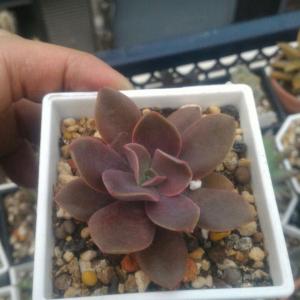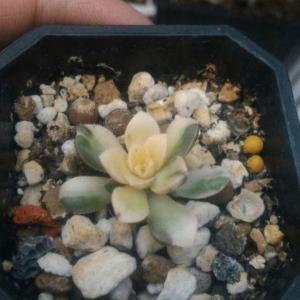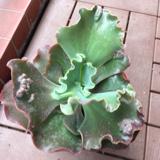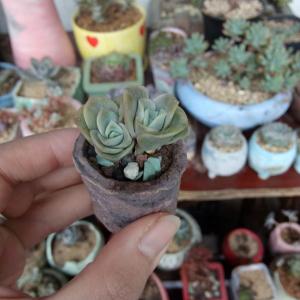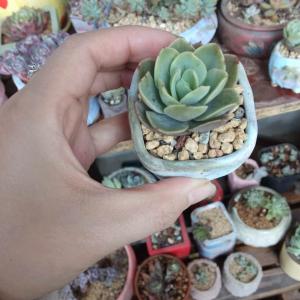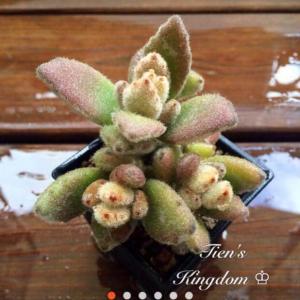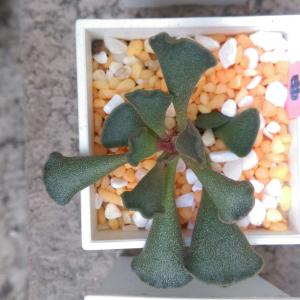文章
Miss Chen
2018年01月17日

Description: This perennial plant is up to 2½' tall, branching frequently from the upper axils of the leaves, and having a shrubby appearance. The base of the plant is occasionally semi-woody, but the upper stems are herbaceous and green. The entire plant is devoid of hairs. The opposite leaves are up to 3" long and ¾" across. The pairs of leaves rotate by 90° as they ascend the stems. They are oblong or lanceolate with blunt tips, and are sessile against the stems. The margins are smooth, while the underside of each leaf is light green and devoid of black dots.
Numerous clusters of yellow flowers occur at the ends of the upper stems. Each flower is about ½–¾" across, with 5 rounded petals, and numerous long stamens surrounding a stigma that is slender and flask-shaped. The flowers have a mild buttercup-like fragrance. The blooming period occurs from early to mid-summer and lasts about a month. The small seeds are distributed to some extent by the wind. The root system consists of a central taproot and short rhizomes. This plant tends to spread vegetatively in sunny open areas.
Cultivation: The preference is full or partial sun, and average to dry conditions. Different kinds of soil are readily tolerated, including those with substantial amounts of loam, gravel, sand, or clay. However, poor soil is often preferred because of the reduced competition from taller plants.

Range & Habitat: Round-Fruited St. John's Wort is widely distributed in Illinois, but it occurs only occasionally (see Distribution Map). It is least common in SE Illinois. This is a native wildflower. Habitats include mesic to dry gravel prairies, sand prairies, hill prairies, rocky open woodlands, thickets, scrubby barrens, rocky bluffs overlooking major rivers, limestone glades, dry banks of lakes, and open areas along roadsides.
Faunal Associations: Bumblebees and other long-tongued bees are probably the most important pollinators of the flowers. Other visitors include Halictine bees, beetles, and Syrphid flies, but they are less effective at pollination. All of these insects collect or feed on the abundant pollen, because the flowers offer no nectar. The caterpillars of the butterfly Strymon melinus (Gray Hairstreak) reportedly eat the seed capsules, although it is not a preferred host plant. The caterpillars of the moth Nedra ramosula (Gray Half-Spot) feed on the foliage. Like other St. John's Worts, the foliage of this species contains a toxic chemical that causes photosensitive skin reactions, particularly in light-skinned animals, and can irritate the gastrointestinal tract. Therefore, mammalian herbivores usually leave this plant alone if other food sources are available.

Photographic Location: The photographs were taken at Crystal Lake Park in Urbana, Illinois.
Comments: This plant can be easily distinguished from similar St. John's Worts by the absence of black dots on the flower petals and undersides of the leaves. The flowers tends to be larger than Hypericum punctatum (Spotted St. John's Wort), but smaller than Hypericum kalmii (Kalm's St. John's Wort), and Hypericum pyramidatum (Great S. John' Wort). This is an attractive plant while in the early to middle stages of bloom, although later losses some of its appeal because of the persistance of older brown petals near the seed capsules.
Numerous clusters of yellow flowers occur at the ends of the upper stems. Each flower is about ½–¾" across, with 5 rounded petals, and numerous long stamens surrounding a stigma that is slender and flask-shaped. The flowers have a mild buttercup-like fragrance. The blooming period occurs from early to mid-summer and lasts about a month. The small seeds are distributed to some extent by the wind. The root system consists of a central taproot and short rhizomes. This plant tends to spread vegetatively in sunny open areas.
Cultivation: The preference is full or partial sun, and average to dry conditions. Different kinds of soil are readily tolerated, including those with substantial amounts of loam, gravel, sand, or clay. However, poor soil is often preferred because of the reduced competition from taller plants.

Range & Habitat: Round-Fruited St. John's Wort is widely distributed in Illinois, but it occurs only occasionally (see Distribution Map). It is least common in SE Illinois. This is a native wildflower. Habitats include mesic to dry gravel prairies, sand prairies, hill prairies, rocky open woodlands, thickets, scrubby barrens, rocky bluffs overlooking major rivers, limestone glades, dry banks of lakes, and open areas along roadsides.
Faunal Associations: Bumblebees and other long-tongued bees are probably the most important pollinators of the flowers. Other visitors include Halictine bees, beetles, and Syrphid flies, but they are less effective at pollination. All of these insects collect or feed on the abundant pollen, because the flowers offer no nectar. The caterpillars of the butterfly Strymon melinus (Gray Hairstreak) reportedly eat the seed capsules, although it is not a preferred host plant. The caterpillars of the moth Nedra ramosula (Gray Half-Spot) feed on the foliage. Like other St. John's Worts, the foliage of this species contains a toxic chemical that causes photosensitive skin reactions, particularly in light-skinned animals, and can irritate the gastrointestinal tract. Therefore, mammalian herbivores usually leave this plant alone if other food sources are available.

Photographic Location: The photographs were taken at Crystal Lake Park in Urbana, Illinois.
Comments: This plant can be easily distinguished from similar St. John's Worts by the absence of black dots on the flower petals and undersides of the leaves. The flowers tends to be larger than Hypericum punctatum (Spotted St. John's Wort), but smaller than Hypericum kalmii (Kalm's St. John's Wort), and Hypericum pyramidatum (Great S. John' Wort). This is an attractive plant while in the early to middle stages of bloom, although later losses some of its appeal because of the persistance of older brown petals near the seed capsules.
0
0
文章
Miss Chen
2018年01月17日

Description: This perennial plant is up to 2½' tall, branching occasionally in the upper half. The hairless stems are red or green. The hairless opposite leaves are up to 2½" long and 1" across. They are oblong, oval, or bluntly lanceolate (with rounded tips), with a few pinnate or parallel veins and smooth margins. The leaves are often sessile or perfoliate, otherwise they have short petioles. Scattered translucent dots are observable on the underside of the leaves. Smaller leaves often appear in the upper axils of the larger leaves on major stems. Many of these stems terminate in tight clusters of yellow flowers. Each flower is a little less than ½" across, and has 5 petals. In the center, is a flask-shaped pistil that is surrounded by numerous yellow anthers on long styles. Numerous small dark dots can occur anywhere on the surface of the petals or the buds, often appearing in streaks. There is no floral scent. The blooming period occurs during mid-summer and lasts about a month. The seedpods split into 3 sections, exposing numerous tiny seeds, which are scattered by the wind when the stems sway back and forth. The root system consists of a branching taproot and short rhizomes. Vegetative colonies of this plant can develop from the rhizomes.

Cultivation: The preference is full or partial sun, moist to mesic conditions, and a rather lean soil, which reduces competition from taller plants. Rocky or gravelly soil is quite acceptable. Occasionally, the leaves turn brown in response to drought, otherwise this plant has few problems.
Range & Habitat: Spotted St. John's Wort occurs in every county of Illinois, where it is fairly common and native (see Distribution Map). Habitats include moist to mesic black soil prairies, gravel prairies, open woodlands (rocky and otherwise), savannas, woodland borders, thickets, clay banks along rivers or lakes, and areas along roadsides and railroads.
Faunal Associations: The flowers attract long-tongued and short-tongued bees, including bumblebees and Halictid bees. Beetles and Syrphid flies may also visit the flowers, but they are less effective pollinators. The reward of these insects is the abundant pollen, as the flowers produce no nectar. The caterpillars of the butterfly Strymon melinus (Gray Hairstreak) reportedly eat the seed capsules, while the caterpillars of the moth Nedra ramosula (Gray Half-Spot) feed on the foliage. Mammalian herbivores usually don't consume this plant because the leaves contain hypericin – a photosensitive toxin. Light-skinned animals are especially sensitive to this toxin, which can cause the skin to blister in sunlight. It can also cause gastrointestinal irritation.
Photographic Location: The photographs were taken at Judge Webber Park in Urbana, Illinois.
Comments: The easiest way to distinguish Spotted St. John's Wort from other similar species involves an examination of the flower petals. Dark dots and streaks can appear anywhere on the upper surface of the yellow petals, whereas for other species of St. John's Wort such dots and streaks are confined near the margins of the petals, or they are completely absent. The common name of this plant refers to the feast day of St. John, which was celebrated in Medieval Europe at the time of the summer solstice (late June). This corresponded to the time when the European species Hypericum perforatum (Common St. John's Wort) typically blooms, and so the saint and wildflower became associated together.

Cultivation: The preference is full or partial sun, moist to mesic conditions, and a rather lean soil, which reduces competition from taller plants. Rocky or gravelly soil is quite acceptable. Occasionally, the leaves turn brown in response to drought, otherwise this plant has few problems.
Range & Habitat: Spotted St. John's Wort occurs in every county of Illinois, where it is fairly common and native (see Distribution Map). Habitats include moist to mesic black soil prairies, gravel prairies, open woodlands (rocky and otherwise), savannas, woodland borders, thickets, clay banks along rivers or lakes, and areas along roadsides and railroads.
Faunal Associations: The flowers attract long-tongued and short-tongued bees, including bumblebees and Halictid bees. Beetles and Syrphid flies may also visit the flowers, but they are less effective pollinators. The reward of these insects is the abundant pollen, as the flowers produce no nectar. The caterpillars of the butterfly Strymon melinus (Gray Hairstreak) reportedly eat the seed capsules, while the caterpillars of the moth Nedra ramosula (Gray Half-Spot) feed on the foliage. Mammalian herbivores usually don't consume this plant because the leaves contain hypericin – a photosensitive toxin. Light-skinned animals are especially sensitive to this toxin, which can cause the skin to blister in sunlight. It can also cause gastrointestinal irritation.
Photographic Location: The photographs were taken at Judge Webber Park in Urbana, Illinois.
Comments: The easiest way to distinguish Spotted St. John's Wort from other similar species involves an examination of the flower petals. Dark dots and streaks can appear anywhere on the upper surface of the yellow petals, whereas for other species of St. John's Wort such dots and streaks are confined near the margins of the petals, or they are completely absent. The common name of this plant refers to the feast day of St. John, which was celebrated in Medieval Europe at the time of the summer solstice (late June). This corresponded to the time when the European species Hypericum perforatum (Common St. John's Wort) typically blooms, and so the saint and wildflower became associated together.
0
0
文章
Miss Chen
2018年01月17日

Description: This shrubby perennial wildflower is abundantly branched and 2-4' tall. The lower stems are woody with shredded gray-brown bark, while the upper stems are green and slightly winged on opposite sides. The opposite leaves are up to 3" and ¾" across (usually about one-half this size); they are linear-oblong to oblong-elliptic in shape, smooth along their margins, and hairless. The upper surfaces of the leaves are medium green, while their lower surfaces are pale green; they are sessile or taper to short petioles. The upper stems terminates in small clusters of 3-7 flowers; additional clusters of flowers may appear along the 2 upper pairs of opposite leaves. Each flower is ¾–1" across, consisting of 5 yellow petals, 5 green sepals, a pistil with 3 united styles, and abundant stamens. The petals are much larger than the sepals.

The blooming period occurs during the summer and lasts about 2 months. Each flower is replaced by an ovoid-lanceoloid seed capsule about 1/3–1/2" (8-12 mm.) in length. At the apex of each seed capsule, the tips of the 3 styles persist and become separated. Each seed capsule is divided into 3 cells and divides into 3 parts at maturity to release the seeds. The small seeds are narrowly oblongoid, flattened, and black. The root system is woody and branching.
Cultivation: The preference is full or partial sun, moist to dry-mesic conditions, and somewhat barren rocky ground. This shrubby wildflower is readily cultivated in gardens.
Range & Habitat: The native Shrubby St. John's Wort is occasional in the southern half of Illinois and largely absent in the northern half of the state (see Distribution Map). Habitats include upland prairies, upland rocky woodlands and bluffs, rocky stream banks, edges of swamps, abandoned fields, pastures, and roadside embankments. Some local populations near urbanWoody Stems & Leaves areas may be escaped cultivated plants.
Faunal Associations: The flowers are cross-pollinated primarily by bumblebees, which collect pollen for their larvae. Other insect visitors that seek pollen from the flowers include Syrphid flies and Halictid bees, but they are less effective at cross-pollination. Sometimes butterflies and wasps land on the flowers, but they are vainly seeking nectar -- the flowers offer only pollen from the abundant stamens as a floral reward. Insects that feed on Shrubby St. John's Wort and other Hypericum spp. include the aphid Brachysiphum hyperici, several leaf beetles, the caterpillars of the butterfly Strymon melinus (Gray Hairstreak), and the caterpillars of several moths. The Insect Table lists many of these species. Most mammalian herbivores avoid consumption of Hypericum spp. because their foliage contains varying amounts of the phototoxic chemical, hypericin. In the presence of light, this chemical can cause rashes to develop on light-skinned animals and it can irritate the gastrointestinal tract.
Photographic Location: A flower garden at the Arboretum of the University of Illinois in Urbana, Illinois.
Comments: Shrubby St. John's Wort has attractive flowers and foliage. It differs from many other Hypericum spp. by its woody lower stems. It is easy to confuse this species with the woody Hypericum kalmianum (Kalm's St. John's Wort), which is restricted to sandy areas near the Great Lakes (including Lake Michigan in NE Illinois). This latter species has 5-celled seed capsules with 5 style-tips, while Shrubby St. John's Wort has 3-celled seed capsules with 3 style-tips. There are also species of St. John's Wort that have 1-celled seed capsules with singular style-tips; some of these may be slightly woody at the base. A widely cultivated woody species, Hypericum frondosum (Golden St. John' Wort), has larger flowers (greater than 1" across) and wider leaves (greater than ¾" across) than Shrubby St. John's Wort. Golden St. John's Wort is native to the southeastern states, but not Illinois. Another scientific name of Shrubby St. John's Wort is Hypericum spathulatum.

The blooming period occurs during the summer and lasts about 2 months. Each flower is replaced by an ovoid-lanceoloid seed capsule about 1/3–1/2" (8-12 mm.) in length. At the apex of each seed capsule, the tips of the 3 styles persist and become separated. Each seed capsule is divided into 3 cells and divides into 3 parts at maturity to release the seeds. The small seeds are narrowly oblongoid, flattened, and black. The root system is woody and branching.
Cultivation: The preference is full or partial sun, moist to dry-mesic conditions, and somewhat barren rocky ground. This shrubby wildflower is readily cultivated in gardens.
Range & Habitat: The native Shrubby St. John's Wort is occasional in the southern half of Illinois and largely absent in the northern half of the state (see Distribution Map). Habitats include upland prairies, upland rocky woodlands and bluffs, rocky stream banks, edges of swamps, abandoned fields, pastures, and roadside embankments. Some local populations near urbanWoody Stems & Leaves areas may be escaped cultivated plants.
Faunal Associations: The flowers are cross-pollinated primarily by bumblebees, which collect pollen for their larvae. Other insect visitors that seek pollen from the flowers include Syrphid flies and Halictid bees, but they are less effective at cross-pollination. Sometimes butterflies and wasps land on the flowers, but they are vainly seeking nectar -- the flowers offer only pollen from the abundant stamens as a floral reward. Insects that feed on Shrubby St. John's Wort and other Hypericum spp. include the aphid Brachysiphum hyperici, several leaf beetles, the caterpillars of the butterfly Strymon melinus (Gray Hairstreak), and the caterpillars of several moths. The Insect Table lists many of these species. Most mammalian herbivores avoid consumption of Hypericum spp. because their foliage contains varying amounts of the phototoxic chemical, hypericin. In the presence of light, this chemical can cause rashes to develop on light-skinned animals and it can irritate the gastrointestinal tract.
Photographic Location: A flower garden at the Arboretum of the University of Illinois in Urbana, Illinois.
Comments: Shrubby St. John's Wort has attractive flowers and foliage. It differs from many other Hypericum spp. by its woody lower stems. It is easy to confuse this species with the woody Hypericum kalmianum (Kalm's St. John's Wort), which is restricted to sandy areas near the Great Lakes (including Lake Michigan in NE Illinois). This latter species has 5-celled seed capsules with 5 style-tips, while Shrubby St. John's Wort has 3-celled seed capsules with 3 style-tips. There are also species of St. John's Wort that have 1-celled seed capsules with singular style-tips; some of these may be slightly woody at the base. A widely cultivated woody species, Hypericum frondosum (Golden St. John' Wort), has larger flowers (greater than 1" across) and wider leaves (greater than ¾" across) than Shrubby St. John's Wort. Golden St. John's Wort is native to the southeastern states, but not Illinois. Another scientific name of Shrubby St. John's Wort is Hypericum spathulatum.
0
0





